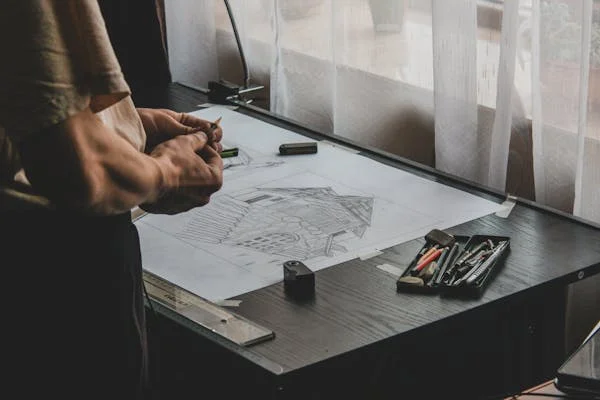Introduction
Sanseyuan Jinzi is a striking architectural style that combines the timeless traditions of Chinese culture with contemporary design principles. This unique fusion creates structures that celebrate the past while embracing modern aesthetics. Whether in the form of traditional homes or modern public spaces, the Sanseyuan Jinzi style has captured the imagination of architects, designers, and cultural enthusiasts worldwide. In this article, we will explore the origins, key features, and modern applications of Sanseyuan Jinzi, highlighting its importance in today’s world.
What is Sanseyuan Jinzi?
Sanseyuan Jinzi is a term that merges two important concepts in Chinese culture and architecture:
- Sanseyuan: This refers to the “three courtyards” layout, which is a traditional architectural style commonly seen in ancient Chinese homes. The layout consists of three courtyards, often arranged in a linear fashion. These courtyards are connected by rooms and structures, creating a flow of space that encourages both privacy and openness. The arrangement symbolizes harmony, balance, and family unity.
- Jinzi: This term represents the intricate designs and ornamental elements incorporated into the structure. Jinzi involves symbolic patterns that often carry deep meanings, such as prosperity, longevity, and protection. It is through these designs that traditional Chinese culture is communicated visually within the architecture.
Together, Sanseyuan Jinzi refers to the combination of these two elements: the traditional three-courtyard layout and the symbolic Jinzi designs. The resulting architectural form is an embodiment of harmony between the natural world, the family unit, and cultural heritage.
The Origins of Sanseyuan Jinzi
Historical Background
The Jinzi aspect of this style emerged as a way to incorporate visual storytelling into the architecture. Artists and artisans would engrave intricate symbols, patterns, and motifs into wooden beams, door frames, windows, and other key structural elements. These designs had symbolic meanings—some aimed at bringing good fortune, others to ward off evil spirits or protect the inhabitants.
Symbolism and Meaning
In traditional Chinese culture, every element within an architectural design has significance. For example:
- Circular shapes symbolize unity and completeness.
- Floral patterns represent fertility, growth, and beauty.
- Animals such as dragons and phoenixes are often depicted as symbols of power, protection, and prosperity.
By incorporating these symbols, Sanseyuan Jinzi not only reflected the family’s social status but also served as a reflection of the family’s beliefs, hopes, and wishes for a harmonious and prosperous life.
The Key Features of Sanseyuan Jinzi
Sanseyuan Jinzi is known for its distinct architectural features that set it apart from other styles. These elements are what make it an enduring and unique design that continues to inspire modern-day architecture.
1. Symmetry and Balance
At the heart of the Sanseyuan Jinzi layout is the concept of balance. The three courtyards are typically arranged symmetrically, ensuring a harmonious flow between the indoor and outdoor spaces. Each courtyard serves a different purpose:
- The front courtyard often serves as an entryway, welcoming guests while providing privacy for the family.
- The central courtyard is where family activities take place and is often the largest of the three courtyards.
- The back courtyard is typically reserved for more private activities and may include garden spaces or areas for meditation.
The careful positioning of rooms and courtyards in a symmetrical fashion also symbolizes the balance between heaven and earth, which is a central theme in Chinese philosophy.
2. Intricate Jinzi Designs
The most common motifs include:
- Dragons and phoenixes: These mythological creatures represent power, protection, and prosperity.
- Flowers and vines: These motifs symbolize fertility and beauty.
- Symbols of nature: Mountains, rivers, and trees often feature in Jinzi designs, representing the connection between the home and the natural world.
These designs not only serve an aesthetic purpose but also carry spiritual significance, creating an atmosphere of peace, protection, and good fortune within the home.
3. Natural Materials and Sustainability
Traditional Sanseyuan Jinzi homes are constructed using natural materials, such as wood, clay, and stone. These materials were readily available and allowed for flexible construction methods.
Wood, in particular, played a significant role in the construction and ornamentation of Sanseyuan Jinzi homes. It was used to create intricate beams, doors, and windows, often carved with symbolic designs that represented the family’s values.
Today, many modern Sanseyuan Jinzi-inspired buildings continue to use eco-friendly materials and sustainable construction methods to reduce their environmental impact while maintaining the aesthetic beauty and traditional charm of the style.
4. Integration with Nature
Sanseyuan Jinzi architecture is deeply rooted in the idea of living in harmony with nature. The open courtyards create a seamless connection between the indoors and outdoors, allowing for plenty of natural light and ventilation.
The use of large windows, open spaces, and traditional garden features such as fish ponds, rock gardens, and flower beds further strengthens the connection with nature. This integration not only enhances the aesthetic appeal of the space but also fosters a sense of peace and tranquility, making the home a haven for its inhabitants.
Modern Applications of Sanseyuan Jinzi
While the traditional form of Sanseyuan Jinzi remains prevalent in historical homes and cultural sites, this architectural style has adapted to contemporary needs, finding applications in various fields today.
1. Modern Architecture
For example, some modern office buildings and cultural centers feature open courtyards and feng shui principles inspired by Sanseyuan Jinzi. The design not only enhances the aesthetic value of these buildings but also contributes to a harmonious environment that promotes well-being.
2. Fashion and Design
The Jinzi patterns, which were originally used in architectural decoration, have also made their way into fashion design. Clothing designers often incorporate traditional Chinese motifs, such as dragons, phoenixes, and flowers, into their collections. These patterns are often used in embroidery or prints to add a sense of cultural heritage and symbolism to the clothing.
In addition, accessories like scarves, jewelry, and bags are designed using Jinzi patterns, allowing individuals to carry a piece of traditional Chinese culture with them wherever they go.
3. Art and Visual Culture
The symbolic designs of Sanseyuan Jinzi are also reflected in modern art. Artists use the intricate motifs of dragons, flowers, and natural elements to tell stories or convey deeper meanings about life, nature, and cultural identity. These designs often appear in paintings, sculptures, and ceramics.
By integrating these traditional symbols into modern art, contemporary artists are able to explore the connection between cultural heritage and modern expression.
The Future of Sanseyuan Jinzi
As we move further into the 21st century, Sanseyuan Jinzi continues to influence design and architecture. While many aspects of the traditional style remain intact, there is a growing trend to blend ancient wisdom with modern functionality.
For example, smart homes designed with Sanseyuan Jinzi. Its principles are being developed, combining traditional feng shui and sustainability with cutting-edge technology. This evolution of the style ensures that Sanseyuan Jinzi will continue to thrive in the modern world while maintaining its deep cultural roots.
Conclusion
Sanseyuan Jinzi represents a beautiful marriage between the past and the present. The intricate designs and thoughtful layout of this architectural style not only reflect traditional Chinese culture but also continue to inspire modern-day creations. From architecture to fashion, art, and design, Sanseyuan Jinzi’s influence is felt far and wide.
As we look ahead, the fusion of traditional and modern elements in Sanseyuan Jinzi. Its cultural significance remains strong, offering a glimpse into a world where ancient wisdom and contemporary innovation work together to create a more harmonious and balanced future.
FAQs about Sanseyuan Jinzi
What is Sanseyuan Jinzi?
It is a Chinese architectural style combining a three-courtyard layout (Sanseyuan) with symbolic designs (Jinzi), representing harmony and cultural heritage.
What are the key features?
How does it blend tradition and modern design?
It combines traditional elements with modern materials, adapting to contemporary architecture, fashion, and art while maintaining cultural symbolism.
Where is it used today?
It influences modern buildings, art, fashion, and design, incorporating traditional motifs in contemporary forms.
What symbolism is in the designs?
Symbols like dragons, phoenixes, and flowers represent protection, prosperity, and balance.
How does it connect with nature?
Through open courtyards and natural materials, Sanseyuan Jinzi creates a harmonious connection between indoor and outdoor spaces.







